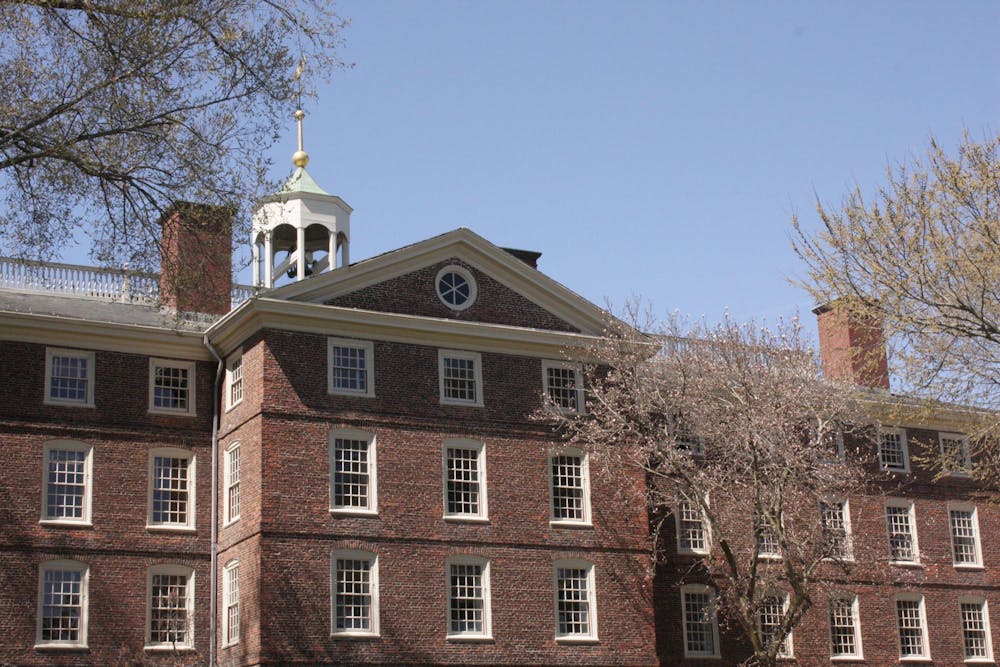On Tuesday, the class of 2028 marked their entry into Brown by walking through the Van Wickle Gates.
Earlier last month, The Herald polled over 40% of the incoming class on their backgrounds, political beliefs and experiences. Here’s what we found.
You can dive deeper into the data through The Herald’s interactive First Year Poll dashboard.
Demographics
85% of the first-year students come from the US while the other 15% live abroad.
California and New York topped the charts for the most common home states of new students followed by Massachusetts, New Jersey and Texas.
China and India were the most common home countries among incoming international students. Canada, Switzerland, the United Kingdom and the United Arab Emirates were also common among the first year class. The Herald received responses from students of 54 countries and territories other than the United States.
One in 10 students said they come from a rural area, while six in 10 reported coming from the suburbs. The rest are from urban areas.
Around two-thirds of students identify as straight, according to poll data. Among LGBTQ+ students, most identify as bisexual. Men were more likely than women and nonbinary respondents to identify as straight.
Around 16% of students were first-generation, which means their parents did not complete a four-year degree. This figure is consistent with that of previous years. Black and Hispanic students were more likely to be first-generation students compared to any other race.
Just over half of students attended public high school, while 40% attended a private school.
Over two-thirds of first-years said that Brown was their first choice school. Yale, Harvard and Stanford were also popular prospective colleges among first-years.
Academics
While first-year students have plenty of time to peruse the course catalog and consider potential areas of study, the most popular intended concentrations were economics, international and public affairs, biochemistry and computer science. The second most common response was “undecided.”
The physical sciences topped the list, with male students over 14 percentage points more likely to pursue the physical sciences compared to their female counterparts.
Only 5% of incoming freshmen intended to pursue only a bachelor’s degree. 16% of respondents said they are pre-medical students while over 7% are pre-law. But the plurality of students were undecided about their post-graduate plans.
Lifestyle
New experiences go in tandem with starting college, but first-year students often come from differing experiences. The following questions were optional.
Most incoming students have consumed at least one alcoholic beverage. 27% have used non-medical marijuana while 17% have used nicotine.
First-year students who have not tried these substances are most open to trying non-medical marijuana and psychedelics.
Though nicotine was among the most popular substances tried, a mere 3% are open to trying the substance — less than those who are open to trying non-prescribed stimulants like Adderall.
29% of first-year students said that they have had sex at least once while the majority of students — 63% — said they haven’t. 8% opted not to answer.
Recruited athletes, those in long-term relationships and those who own fake IDs were among the most likely to have had sex in comparison to their relevant counterparts.
As they settle in on campus, 43% of freshmen are single and ready to mingle: 28% are looking for a relationship while 15% are looking for something casual.
16% of incoming students are starting the school year in a long-term relationship. The percentage of students in a long-term relationship tends to increase along with their class year, according to previous campus-wide polls conducted by The Herald.
Political ideology
Young voters are being courted by political campaigns up and down the ballot as a crucial bloc of support in this November election. At Brown, first-year students overwhelmingly identify as more liberal.
Only 7.4% of first-year students identify as either somewhat or very conservative — a stark contrast to the almost 70% of students identifying as somewhat or very liberal. Only 17% of students said that they do not have a political ideology, many of whom are international students.
Recruited athletes were more likely to identify as conservative in comparison to non-athletes.
An overwhelming majority of eligible first-years plan to vote for Vice President Kamala Harris this November. Black students were her most solid base of support among first-year respondents, along with those from middle-income households.
Only 7% of first-year students intend to vote for Republican former President Donald Trump, and those from households making over $400,000 per year were more likely to cast their ballot for him.
The most important issues for these voters also differed by candidate. Overall, the top three most important factors for Brunonians across the political spectrum were democracy, reproductive healthcare and the candidate’s character. These three issues remained top-of-mind for Harris voters.
But for those voting for Donald Trump, the economy, immigration and crime/safety were more important. These differing policy priorities among Trump and Harris voters align with national polls of the American electorate.
Editors’ Note: The Herald’s First Year Poll was conducted by Owen Dahlkamp, Ryan Doherty, Tom Li, Megan Chan, Claire Song and Talia LeVine and included 738 responses, or around 43% of the incoming undergraduate class of 2028. The poll was sent to all eligible students via email and was open from Aug. 13 to 19.

Owen Dahlkamp is the managing editor of newsroom on The Herald's 135th Editorial Board, overseeing the paper's news operations. Hailing from San Diego, CA, he is concentrating in Political Science and Cognitive Neuroscience with an interest in data analytics. In his free time, you can find him making spreadsheets at Coffee Exchange.





